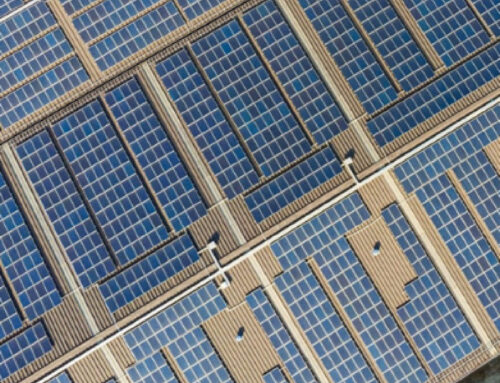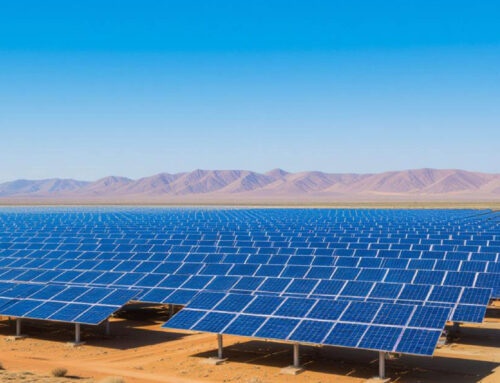
India said on the global stage at the just-finished COP26 in Glasgow that by 2030, it will increase its renewable power capacity to 500 GW from 150 GW now, and that renewable energy would fulfill 50% of India’s energy needs. Even as energy analysts debate whether India’s 50% goal relates to capacity or generation (more on this later), one thing is clear: the renewable energy sector is seeing unparalleled growth.
In terms of solar energy, India boosted its capacity 15-fold between 2014 and 2021. The government now wants to triple the installed solar capacity of 37 GW in 2020 by 2022, bringing the total to 270 GW — which may be even higher — by 2030. India’s lofty solar energy objectives are skyrocketing.
Under the brightness of the sun, though, even lofty ideals can cast long, black shadows over the land and its people. While India’s goal of increasing solar energy production is admirable, the devil is in the details. The scope of India’s solar energy ambitions, as well as the timetable it has set to attain them, deserve more scrutiny, particularly from an ecological aspect, since the most compelling argument in favor of these projects is environmental. As a result, we must consider how to reconcile the ostensible benefits of power generating with the potential environmental and human costs.
We must descend from the sophisticated world of technology and economics into the ordinary realm of the earth and its inhabitants to investigate this. To begin with, generating gigawatts upon gigawatts of solar energy necessitates large swaths of open land that receive year-round sunlight. India is fortunate in this regard. Over half of India’s land is sunny and semi-arid, with an annual rainfall of less than 1,000 mm. To put it another way, these soils are too dry to maintain a continuous canopy of trees.
Staggeringly diverse
Grass, herbs, and shrubs make up the native vegetation in this zone. We observed that these Open Natural Ecosystems (ONEs) are incredibly diverse, ranging from wooded savannas, scrublands, and grasslands to rocky outcrops, ravines, and dunes when we recently mapped them. ONEs also have a diverse array of animal species, many of which are unique to the Indian subcontinent, such as the black deer and the critically endangered great Indian bustard.
ONEs provide essential ecological services in addition to being home to unique biological types. According to studies, ONEs can trap more carbon than trees planted on them under certain environmental circumstances. Millions of pastoralist and agro-pastoralist communities across the country rely on grazing-based livelihoods, which are supported by ONEs. These low-density communities have a long history of coexisting with these habitats and their unique animals, thanks to their varied cultures.
India’s ONEs, on the other hand, are still misunderstood, distorted, and destroyed. Successive administrations have continued a colonial heritage of labeling ONEs as “wastelands” and attempting to turn them into “productive” assets; they have attempted to “develop” them, hence incentivizing their erasure. Unlike forests, no conservation rules are protecting biodiversity-rich ONEs from being diverted. As a result, these landscapes have become some of the simplest to despoil and ruin. Renewable energy technologies, particularly wind and solar power, rely largely on open spaces. What better place than our “wastelands” for such “development”?
Extremely vulnerable
“The unfortunate classification of our semi-arid and arid grassland-savanna ecosystems as wastelands has made them extremely vulnerable to co-option for a range of developmental projects, including large solar farms, which are projected as green and sustainable,” says Jayashree Ratnam, Director of the Wildlife Biology and Conservation Program at the National Centre for Biological Sciences, and a global authority on savanna ecosystems. “Such labels hide the significant loss of unique biodiversity, ecosystem services, and ancient livelihoods that have sustained people in these landscapes for thousands of years. When these ecological and social costs are considered, it is unlikely that such benign labels will remain applicable.”
John Locke, a notable 17th-century British philosopher, influenced a wide range of themes, from liberalism, epistemology, and political philosophy to British colonial taxation and land reform initiatives. According to anthropologist Judy Whitehead, Locke’s “concept of wasteland, as opposed to value-producing land, constituted a founding binary opposition that constructed how landscapes were categorized. Associated with wildness, wilderness, and savagery in the 19th century, the category of wasteland also defined who would and who would not become most vulnerable to dispossession and/or enclosure.”

As a result, wastelands were defined as common village grounds that were used for pastoralism and were effectively untaxable. In its 75th year of independence, India proudly maintains this colonial artifact. The government commissions the Wasteland Atlas of India every few years to chart regions that are now unproductive but can be ‘improved’ and turned ‘productive.’ Waterlogged areas and marshes, which are critical for groundwater recharge; mountains covered in permanent snow, which are the source of our greatest rivers; savannah grasslands and pasturelands, which support millions of pastoralists; deserts, dunes, ravines, rocky outcrops, inselbergs, and plateaus, which are rich geological features and home to unique fauna and flora.
Mislabelled
The ONEs are the most common type of ‘wasteland’ in India. The majority of these are savanna ecosystems that have been incorrectly labeled as degraded scrub woodland or degraded grazing pastures. These are the same areas that are being considered for large-scale solar expansion.
The public benefit of India’s renewable energy projects is sometimes overestimated, just as the ecological and cultural advantages of ONEs are neglected. The General Review 2020 figures from the Central Electricity Authority are eye-opening. Renewable energy sources (excluding hydroelectricity) contribute to only 8% of total power generation, despite accounting for roughly 19% of installed capacity. Hydropower, on the other hand, accounts for 11% of capacity and 9% of generation, whereas thermal power accounts for 69% of capacity but 80% of generation. Solar and wind projects, which can only provide power for sections of the day, require extra power generation capacity — or, worse, grid-scale storage — to compensate for the cyclic or seasonal nature of power generation.
This peculiarity is made much more intriguing by the political economy of electricity generation. The public sector controls over 90% of both installed capacity and power generation in the renewables sector’s traditional lynchpin, hydroelectricity. However, with the new entrants — solar, wind, biomass, and trash — the private sector now controls 95 percent of installed capacity and electricity generation. As a result, private sector projects account for practically the entire difference between capacity and generation — or, in other words, the gap between desire and reality. Given that their proponents profit handsomely from incentives or concessions relating to land, infrastructure, and money (while contributing relatively little to energy), these projects demand significantly higher environmental, social, and even energy auditing criteria.
Such calls for investigation often perplex the general people, who believe that renewable energy is always desirable because it is a “green” technology. It is worth noting that an energy option’s ecological footprint is determined by the magnitude and type of its deployment, not by its technology. When deployed at the gigawatt-scale, the photovoltaic panel, which may seem fairly benign at the rooftop scale, can be substantially less so. With ambitions to create hundreds of gigawatts of power at the grid-scale, we end up with ecological and social footprints of energy production that are just as big and damaging as any large hydroelectric project, even with wind and solar technology.
Murmurs of discontent have spiraled into overt violence as both ecology and society are ignored. The Supreme Court has had to interfere because one of India’s most charismatic birds, the great Indian bustard, is being displaced by these projects and killed in collisions with overhead power lines, much to the dismay of governments and energy companies. Communities in Kutch, for example, have been resisting renewable energy projects that have moved them from their traditional grazing pastures.
Roof-top alternative
The government’s program on roof-top solar installations provides an alternative to grid-scale solar on ONEs. Although grid-scale solar on residential roofs may be difficult to deploy, there are enough large-scale ‘grey’ regions — areas that have already been built up or designated for industrial uses — where large-scale solar output is viable. The Maharashtra Industrial Development Corporation, for example, has a land bank of more than 2.5 lakh acres. Even if only 20% of this land was utilized for solar power generation, it would produce nearly 16-gigawatt hours per year. Because these industrial zones are large power consumers, such localized generation and consumption will reduce transmission losses. Rooftops of public buildings can also provide an excellent chance for solar panels, as some cities have done with railway stations.
Another possibility is the use of agrivoltaics on degraded agricultural soils. Solar panels that are installed in a way that allows for growing underneath them have two advantages. The solar panels’ shade minimizes evaporation and saves water, and the panels themselves benefit from greater efficiency because of the cooling impact of the plants growing beneath them. In India’s semi-arid and sub-humid regions, the Alliance for Reversing Ecosystem Service Threats has identified 11 million hectares of degraded agricultural fields. If these areas were exploited for agrovoltaics, the rural economy of these places may be transformed.
While renewable energy projects are well-intentioned and strive to minimize our reliance on a fossil-fuel-based energy economy, more attention should be made to how and where these projects are developed. Unfortunately, they have remained ill-conceived and poorly executed attempts thus far, giving little attention to the ONEs’ ecological treasures and diversity, as well as the human life and cultures that these lands support.
Click Here for more updates ornatesolar.com
Resource: The Hindu













Leave A Comment